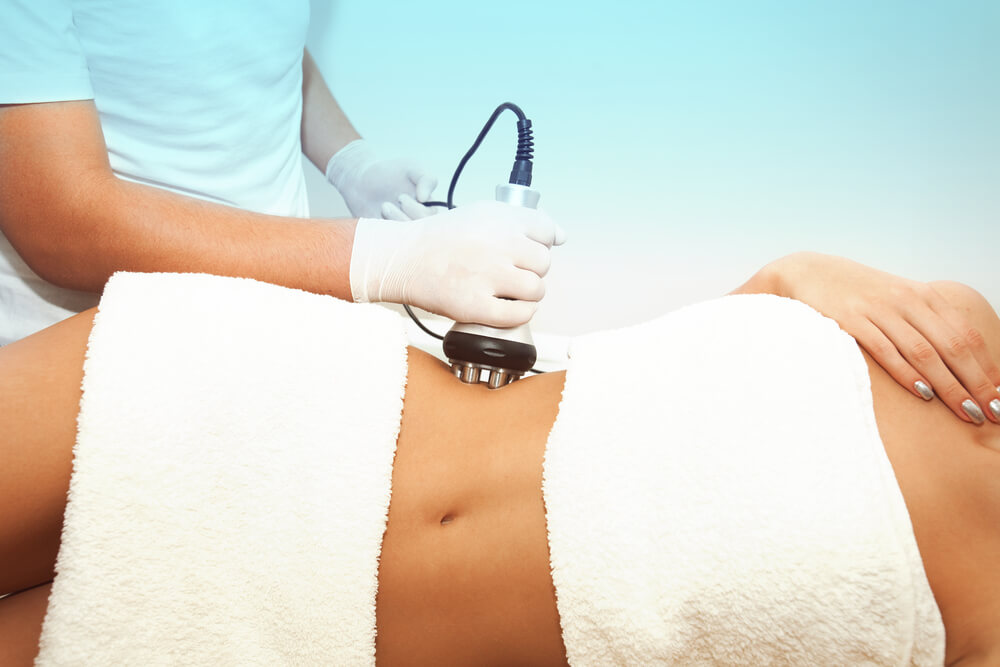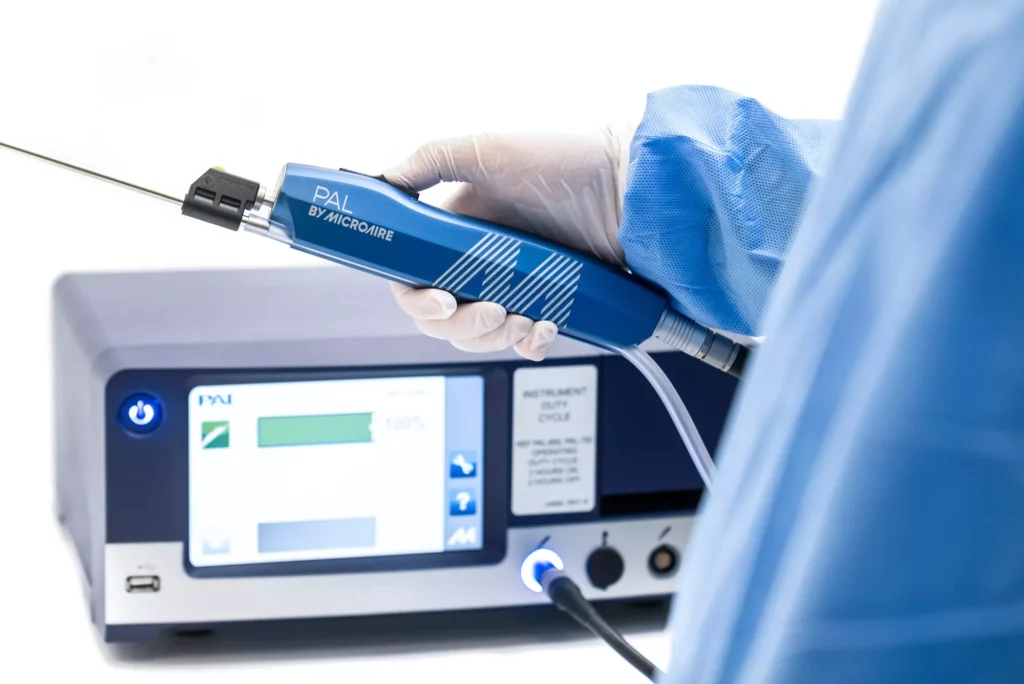Key Takeaways
-
Awake liposuction is a N0n-invasive procedure. Because it employs the use of local anesthesia, patients can remain awake and comfortable while experiencing lower risks and a faster recovery.
-
Ideal candidates typically have a BMI under 30. This range is indicative of a healthier body composition, promoting superior outcomes and minimizing risks.
-
These health factors, like BMI, play a considerable role in determining eligibility for awake liposuction. Cardiovascular health, respiratory function, and skin elasticity are all key factors in this decision.
-
Ideal candidates should be vocal about their medical backgrounds, as well as any present ailments. This will help guarantee a safe, effective procedure that is customized precisely to their unique needs.
-
Psychological readiness, including realistic expectations and a commitment to post-procedure care, is essential for achieving satisfactory results and maintaining them long-term.
-
Individuals with severe health risks, unsuitable BMI, or unrealistic expectations should avoid the procedure and consider alternative options for their safety and well-being.
Awake liposuction offers a minimally invasive approach for body contouring, making it an appealing option for many. Ideal candidates are those with a body mass index (BMI) typically between 18.5 and 30, as this range aligns with healthy to slightly overweight categories.
Good overall health is essential, including stable medical conditions and no significant risk factors like uncontrolled diabetes or heart issues. Individuals should have realistic expectations and localized fat deposits that resist diet and exercise.
This procedure suits those seeking targeted fat removal without general anesthesia. Consulting with a qualified medical professional ensures personalized advice based on specific health factors. Understanding these criteria helps determine if awake liposuction aligns with your goals and physical condition.
What Is Awake Liposuction
Define awake liposuction
Awake liposuction is a cosmetic procedure designed to reshape and enhance body contours by specifically targeting areas of stubborn fat. This conservative technique is quite different from regular liposuction. It uses local anesthesia, allowing patients to be awake and comfortable during the procedure, without requiring general anesthesia.
This method further reduces risks and provides a safer experience across the board. The procedure typically delivers visible results almost immediately. In addition, it demands less recuperation time, making it a convenient option for busy people seeking efficient fat elimination.
Someone coming in to ameliorate love handles or thighs, for example, can leave with much better contours. They can accomplish it with little interruption to their daily routine.
Key differences from traditional liposuction
The key difference is the anesthesia used. Awake liposuction uses local anesthesia, removing the dangers usually associated with general anesthesia. This too helps make a person’s recovery much quicker.
Most patients are back to work or other light activities in a few days, depending on what area of the body was treated. Awake liposuction is a less invasive procedure done through smaller incisions, further reducing the risk of scarring.
For example, a person undergoing abdominal sculpting would probably only have minimal scarring. These minor defects will improve with time – more so than the deeper scars created with traditional techniques.
Benefits of awake liposuction
There are many benefits of awake liposuction. The quicker recovery time allows most individuals to return to their everyday routines sooner. This is what makes it such a popular procedure among the time-starved.
Patients can communicate with their surgeon, like Dr. Kriya, during the procedure, ensuring the final results align with their goals. This immediate feedback helps to create a more accurate fat removal, which leads to increased patient satisfaction.
The risks of local anesthesia are lower and complications are very uncommon, occurring in less than 1% of procedures. This information provides you additional assurance.
Ideal BMI Range for Awake Liposuction
Define BMI and Its Role in Eligibility
BMI, or Body Mass Index, is a system used to calculate a person’s body weight in relation to their height. It’s a key consideration in deciding whether or not someone is a good candidate for awake liposuction. Preferably candidates should be within an ideal BMI range of 18.5 to 30. This BMI range indicates a healthier body composition, which often results in a smoother recovery and overall improved outcomes.
A BMI that is steady in this range indicates that the body is ready and more likely to receive a successful response from the procedure. When BMI is above or below this range, the risks start to get higher. For BMI patients above 30, the complications like anesthesia-related complications or delayed healing are increased.
For example, people with a BMI less than 18.5 do not have enough fat to reasonably remove. This limitation can often make or break the success of the procedure.
Recommended BMI Range for Candidates
Here’s a closer look at BMI categories:
-
Underweight: BMI below 18.5
-
Normal weight: BMI 18.5–24.9
-
Overweight: BMI 25–29.9
-
Obesity: BMI 30 and above
It is safer and leads to better results when patients stay within 30% of their ideal weight. For anyone with a BMI greater than 30, complete evaluations are necessary to reduce risks. For patients with a BMI over 40, there is a critical danger.
They are more than three times as likely to experience complications than patients with a normal BMI.
Risks of High or Low BMI During the Procedure
In addition, physical health is an important factor in determining awake liposuction candidacy. Cardiovascular health, respiratory function, and blood pressure levels are just a few factors that are critical to review.
Patients at the higher end of the BMI spectrum need to be particularly careful. Patients with a low BMI should strive to find themselves within that ideal range to produce the best outcomes. A thorough medical evaluation keeps it safe and effective for all patients.
Health Factors That Influence Eligibility
1. Assess Overall Physical Health
A candidate’s general health plays a major role in determining their eligibility for awake liposuction. Chronic conditions like diabetes, high blood pressure, or heart disease increase the risk of complications, making a detailed health assessment crucial.
For instance, someone with uncontrolled diabetes may face slower healing or higher infection risks. Medications, such as blood thinners, can affect recovery and may need to be paused before surgery. Full disclosure of medical history during consultation ensures the surgeon can make informed decisions and plan the procedure safely.
2. Consider Existing Medical Conditions
Scar quality is another key factor. Elastic skin has a greater ability to retract post-fat removal, creating smoother outcomes. For instance, younger people or those who haven’t experienced weight loss may have an easier time achieving an even skin tone.
Factors like aging or major fluctuations in weight can decrease elasticity, affecting the end result. Surgeons typically evaluate this as part of an evaluation and work to create realistic expectations.
3. Evaluate Skin Elasticity and Tone
Lifestyle habits, such as smoking, further affect eligibility. Smoking reduces blood flow, which not only slows healing but increases risks such as developing an infection.
Patients are usually instructed to stop smoking a minimum of six weeks prior to surgery for the best outcomes. With daily exercise, physical therapy, and a nutritious diet, rehabilitation accelerates and results are outstanding.
4. Check for Smoking and Lifestyle Habits
Allergies and medication history are scrutinized. For instance, patients with anesthesia-related allergies or patients on supplements requiring medication modifications may need these.
Providing a full list of medications up front can prevent future issues.
5. Review Allergies and Medication Use
So can prior surgeries and chronic illnesses. Any history of complications, like healing poorly or forming abnormal scars, needs to be shared to ensure the safest approach.
Data from the machine learning models empowers surgeons to customize the procedure for the patient’s specific history.
Importance of Medical History
Role of past surgeries in candidacy
Your medical history is another key factor in deciding whether or not awake liposuction can work for you. Previous surgeries, especially those involving the abdomen or areas targeted for liposuction, can impact how your body responds this time. For instance, if they have scar tissue from previous procedures, it can inform the surgeon’s technique or expected recovery time.
Chronic illnesses, such as uncontrolled diabetes or significant heart disease, need to be deeply controlled prior to the procedure as well. These conditions are more challenging for anesthesia and delay recovery. Discuss any planned changes with your surgeon before proceeding.
Equally important to protecting yourself is working with your primary medical provider to minimize these risks. This could involve lab work or medical clearance, creating a safer experience from the get-go.

Impact of chronic illnesses on safety
Honest conversation about previous operations or complications will lead to the best possible care. If you’ve experienced complications such as wound healing or adverse reactions to anesthesia in the past, your surgical team should be made aware.
For example, if a patient had previous allergic reactions to drugs, this can guide what drugs should be avoided during surgery. Providing these specifics helps the production team anticipate and minimize hazards. Transparency isn’t just good business—it’s the key to keeping you healthy and getting you amazing outcomes.
Importance of disclosing prior complications
It’s important to know that being prepared for awake liposuction goes beyond physical well-being. Psychological factors play a significant role in the process.
Psychological readiness is important. We want to make sure that candidates have realistic expectations and the best understanding of the recovery process. Generally speaking, plan to take off work for 3-5 days. You may need to plan for some lifestyle changes like avoiding certain meds or fasting.
Here’s a quick checklist for readiness:
-
Acceptance of your current body image.
-
Understanding the effort needed to maintain results.
-
Commitment to following aftercare instructions.
Don’t forget BMI. BMI is a huge factor. Liposuction, she says, is most effective in patients who are at or just above their ideal body weight.
Patients who have a BMI >30 are frequently higher risk so careful evaluation is important. Tests such as lab work or BMI checks are needed to promote safety and begin to build a framework for success.
Psychological Readiness for Awake Liposuction
Achievable goals and realistic expectations
Whatever the reason, having clear, achievable goals is an important part of the psychological readiness for anyone considering awake liposuction. This procedure focuses on aesthetic body contouring rather than extreme weight loss. It’s important to understand that the end results will be an improvement to your natural figure—not a complete transformation.
Dr. Ginger Xu wants to make clear that liposuction is an initial step toward a healthier lifestyle—not an easy way out. She encourages patients to approach it as an investment in their health. This means following through with a nutritious diet plan and committing to an active lifestyle that incorporates regular exercise.
Media has a way of showcasing these idealized images that create some pretty high expectations. Dr. Xu takes time to explain how surgical outcomes differ from these portrayals, ensuring patients have a grounded understanding of what can be achieved. For example, while liposuction can slim specific areas, skin elasticity and overall health play roles in the final look.
Open and honest conversations with your surgeon are essential. Throughout the process, Dr. Xu is highly attentive to your individual goals and will provide you with realistic expectations for results and recovery.
Emotional preparedness
Candidates must consider their psychological readiness to awaken to significant physical and emotional changes post-surgery. Stress and anxiety will only complicate recovery, which is why it’s so important to stay calm and remain as prepared as possible.
Using apps that connect patients with others who’ve had a like experience can help with that emotional support. Dr. Xu recommends getting support from friends, family, or professionals to work through any anxieties.
Post-procedure commitment
Regardless of the surgery you choose, long-term success relies on you embracing a healthy lifestyle after your surgery. Healthy diet, regular activity, and maintenance visits are crucial to achieving the best outcome possible and maintaining it.
In collaboration with patients, Dr. Xu closely monitors progress and addresses any concerns, making sure each patient is satisfied and safe.
Who Should Avoid Awake Liposuction
Candidates with Severe Health Risks
Safety issues such as underlying health conditions disqualify most people from undergoing awake liposuction. For example, if you have uncontrolled diabetes, advanced heart diseases, or serious respiratory disease, these may put you at higher risk both during and after surgery.
These comorbidities can make anesthesia more complex, delay healing or increase risk of infection. If you’re living with chronic conditions, your physician may recommend getting those stabilized before moving forward with any elective procedure.
Severe obesity, defined as a body mass index (BMI) greater than 30, is another consideration. At this scale, the risks of complications such as infections, longer recovery, or chronic pain are significantly increased. Expectations may be unrealistic, as greater fat volumes may result in less noticeable transformations.
Individuals with Unrealistic Expectations
Awake liposuction can only do so much — and it’s crucial to know what it can and can’t do. For candidates seeking radical change, or looking to “burn it all down,” there might be a letdown.
Awake liposuction is ideal for body contouring rather than major weight loss. Setting appropriate expectations according to your individual body and circumstances is fundamental to the success of your procedure.
A complete and honest consultation will help you understand what’s possible and what you need to be ready for.
Unsuitable BMI or Skin Conditions
Patients with a BMI greater than 30 not only have higher risks, but less gratifying outcomes. Removing a lot of fat in these situations may result in a lot of loose skin being left behind, particularly when skin elasticity is already compromised.
Candidates who are near their ideal weight—within 30%—typically have the best results. Concerns about skin quality should be taken into account, since if skin is saggy, awake liposuction might not deliver optimal results.
Preparing for the Procedure
To optimize your health and surgery results, consider these steps:
-
Maintain a stable weight before surgery.
-
Follow a healthy, balanced diet.
-
Include regular physical activity in your routine.
These habits do more than get you physically ready – they mentally prepare you for the long journey ahead as well.
Preparing for Awake Liposuction
Implementing healthy lifestyle practices in the lead-up to awake liposuction will improve the outcomes and healing process. Rebounding, walking, or any other activity to boost circulation and overall fitness will make the recovery process go more easily.
Combine this with a fresh, healthy diet full of vitamins and lean proteins, because good nutrition helps your body heal and repair tissues. For instance, fruits and vegetables, such as spinach, salmon, or eggs, are rich in nutrients that help facilitate the body’s healing process.
Hydration is equally important. Staying hydrated will help your body naturally flush out toxins. It helps your skin maintain its elasticity, which can improve the outcome of the procedure.
Avoidance of other harmful substances including tobacco and alcohol is a must. Smoking, for example, decreases blood flow, leading to delayed healing and higher complications.
Alcohol can propagate these same issues by thinning your blood and inhibiting your body’s ability to recover from surgery. Eliminating these habits ahead of time provides your body the best opportunity to heal properly and quickly.
Steps to Optimize Physical Health
A complete and honest consultation is the best place to start. This appointment will help you know if you’re a good candidate and help you set realistic expectations.
It’s an opportunity to begin customizing a surgical plan that meets your individual needs and to address any remaining concerns. For instance, people with a BMI greater than 30 require extra precautions, as they are at an increased risk.
This final meeting helps make sure you’re completely prepared, both physically and mentally.
Pre-Procedure Consultation Importance
Following your pre-surgery guidelines allows the process to go smoothly and safely. Surgeons will frequently advise against their patients’ use of anti-inflammatory medications or herbal supplements that are known to raise the risk of bleeding.
Fasting for at least 6-8 hours prior to surgery is another standard recommendation. These preparatory steps dramatically reduce the complication risk and allow the procedure to go smoothly and as expected.
Following Pre-Surgery Instructions
These are perfect candidates for the procedure—they are in good health and have a BMI well under 30. Preparation in both body and mind are essential for a successful outcome.
Think realistically about your lifestyle and dedication to post-operative care. Recovery time is subjective, but most patients feel comfortable returning to work within a few days, with swelling and soreness taking a noticeable dip by the second week.
Final results are not fully apparent until three to six months after the procedure.
Conclusion
As you can see, awake liposuction presents a simple, intuitive, and highly effective treatment for individuals seeking to shape or contour specific areas of their body. Ideal candidates will be within a healthy BMI range and will be committed to their general health above all else. Clear medical history and realistic outlook Good physical health with realistic expectations go a long way toward making anyone an ideal candidate. More than simply achieving aesthetic goals, it’s important for patient safety and long-term satisfaction that the results are right.
When you communicate openly with your physician, they can guide you in selecting the ideal option and help you get ready for the road ahead. Ideal candidates for awake liposuction Choosing the right lipo procedure for you is an important process that goes beyond BMI. Featured image: Holger Schué, Unsplash Underutilized Resource RECOMMENDED ARTICLES Ready to make the leap? Contact an experienced provider today to talk about what you want to achieve and whether awake liposuction can help you get there.
Frequently Asked Questions
What is awake liposuction?
Awake liposuction is a safe, effective, and minimally invasive cosmetic procedure performed using advanced techniques under local anesthetic. This allows liposuction patients to remain awake yet fully alert throughout the procedure, minimizing the risks associated with general anesthesia and resulting in quicker recovery.
What is the ideal BMI range for awake liposuction?
The perfect BMI for awake liposuction, a popular body contouring procedure, is generally between 18 and 30, making it essential for liposuction candidates to be close to their ideal weight.
What health factors might make someone ineligible?
Health issues such as uncontrolled diabetes, serious heart disease, or blood clotting disorders can disqualify liposuction candidates. A complete medical evaluation determines your safety and eligibility for cosmetic procedures.
Why is medical history important for awake liposuction?
Your medical history helps your plastic surgeon identify any risks and determine if the liposuction procedure is suitable for you, facilitating appropriate planning and minimizing complications during and after the awake liposuction procedure.
Can psychological readiness affect eligibility for awake liposuction?
Oh absolutely, you have to be mentally prepared. Considering liposuction, candidates should enter the procedure with realistic expectations and an optimistic attitude toward the outcome and recovery, leading to higher satisfaction and better aesthetic results.
Who should avoid awake liposuction?
Candidates considering liposuction with severe obesity (BMI over 30), inability to tolerate the procedure, or unrealistic expectations should not undergo the awake liposuction procedure. A consultation with a qualified surgeon is the best way to determine if you are an ideal candidate.
How should I prepare for awake liposuction?
Follow any other pre-operative recommendations your surgeon may have, such as stopping blood thinning medications and quitting smoking, while also considering liposuction techniques like the tumescent technique. A nutritious diet and education can help improve safety and set the stage for a more successful recovery.





















